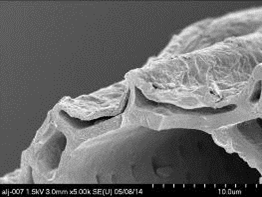Biochar and metal remediation
Biochar is a carbon rich material produced from the incomplete burning of biomass under conditions of minimal oxygen in a process known as pyrolysis. This process changes the structure of the feed material resulting in an aromatic composition and a condensed molecular structure. The material is resistant to chemical and biological weathering and has shown potential as an adsorption material. Biochar is similar to activated carbon which has been widely used in wastewater treatment and water purification. The benefit of biochar is that is offers a cheap alternative to activated carbon as it can be produced at lower temperatures, use a waste biomass and negate any post treatment processes.
The immobilization of metal ions from solution by biochar is attributed to the precipitation of insoluble compounds and a surface acidity caused from the presence of functional groups on the surface of the biochar. These functional groups form at the edges of the aromatic sheets at unsaturated carbon bonds, once formed they are able to undergo hydrolysis in solution producing H+ ions which vacate a negative –COO- exchange site to which metal cations can become associated. Much of the research at Aberystwyth has focused on promoting the formation of these functional groups during pyrolysis .
Research into the application of biochar to mine effluents is in its infancy with limited examples in literature and none that report field trials. The are however examples of biochar being applied to contaminated soil which has shown success at immobilizing metals.
Like any adsorption media the biochar will become saturated with metals and will no longer be able to perform efficiently. The second aspect of the project will look at the disposal of the biochar and the potential recovery of metals.




